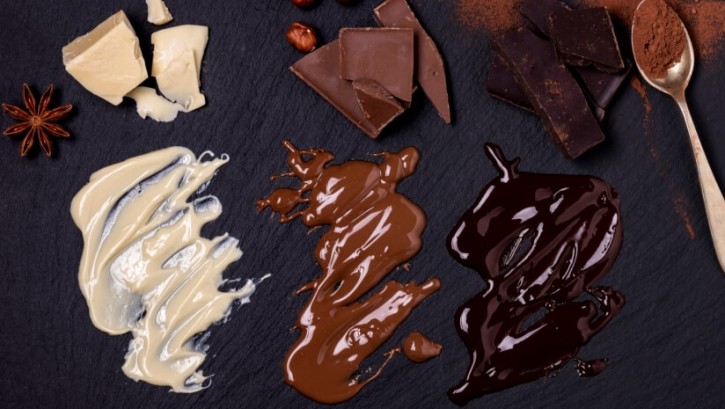How manufacturers can cure chocolate’s heat resistance

In a recent study, researchers from the Department of Food Science at Pennsylvania State University along with Hershey’s Technical Centre studied the effect of curing conditions on heat resistance in chocolate.
Hershey partially funded the study, which was published in Food Science and Nutrition on July 9 2024. The company also supplied all the ingredients used by its researchers. No limitations of the study were given. However, it’s important to note that as these findings relate specifically to Hershey’s white chocolate, exact curing results may vary depending on the brand and type of chocolate used.
Also, the study only explored white chocolate. Further research can therefore provide additional insights into how manufacturers can modify conditions to cure heat resistance in milk, dark and other chocolate varieties from different brands too.
Why heat resistant chocolate matters
Developing heat-resistant chocolate effectively is a big deal for confectionery companies, especially those producing and selling their sweet treats in tropical regions. Dry, humid and hot climates can affect the quality of the end product when it arrives to suppliers and on retailers’ shelves.
Countries with tropical climates are also more common than we may think. Africa, Asia and South America contain fully tropical countries, the World Population Review reports. Other perhaps less expected countries, some in these regions and some not, are also partially tropical. Countries like Australia, the US, Egypt and China are all somewhat tropical.
The fatty phase of chocolate is mainly cocoa butter, which determines its melting point. As melting point temperatures head towards 28–32°C, chocolate starts to soften and lose shape. The chocolate finally melts at temperatures between 34–36°C. Ensuring chocolate reaches its melting point is vital, as this means the ingredient will adhere to wrappers and hands. However, in tropical climates, melting points vary, requiring producers to develop heat-resistant chocolate to better meet consumer demands.
Removing the risk of redundant or ruined chocolate supply is a big concern for brands worldwide. However, getting the exact methods, ingredient mixes and approaches to chocolate production that do this can be a challenging process of trial and error.
Protecting chocolate production in tropical climates
Now, researchers have delved into various methods to help cure heat resistance in white chocolate. Their specific aim was to create chocolate that can be collected and handled in temperatures between 33°C and 55°C.
Like milk chocolate, white chocolate contains milk solids and sugar but does not contain nonfat cocoa solids. Dark chocolate has cocoa solids and sugar but minimal or no milk ingredients. The Hershey white chocolate that the researchers analysed contained 30% whole milk powder, 44% sucrose and 26% cocoa butter.
One method to create heat-resistant chocolate involves exposing the product to high humidity and elevated temperatures. In this study, researchers trialled the effectiveness of curing by storing solid chocolate samples in 83% relative humidity (RH) ― the most common way to measure humidity ― at 29°C for one week. The researchers measured moisture content before and after curing was measured using the Karl Fischer technique, a popular way to measure water content in food.
Four ways to cure heat resistance
1. Measure moisture content
The researchers confirm moisture content is vital to develop heat-resistant structures in chocolate. The initial moisture content between the various samples was similar before curing. However, after curing, all these samples showed a significant increase in moisture content due to the curing environment’s high RH.
Industry understanding based on earlier research indicates that the rate of moisture migration is affected by several factors. Considering chocolate’s texture, moisture movement is influenced by factors such as the difference in chemical potential between areas with high and low water activity. Temperature also plays a role in moisture migration.
2. Prioritise texture, too
Using a texturometer to measure data, the researchers found various samples were similar before curing. After the curing process, all the samples exhibited a noticeable increase in hardness, which could be attributed to forming an internal structure.
Bars with Polyglycerol polyricinoleate (PGPR) required significantly more force than those made with lecithin. Lecithin is a mixture of fats that are essential to cells in the human body. Polyglycerol polyricinoleate (PGPR) is strongly lipophilic, soluble in fats and oils and insoluble in water and ethyl alcohol. Lecithin and PGPR have water-binding properties, but lecithin forms a denser structure around sugar molecules.
3. Handle heat-resistant chocolate with care
Chocolate’s heat resistance is categorised as mild, intermediate and extreme. Extreme heat resistance means it can endure temperatures over 37.9°C. In the study, white chocolate samples with either PGPR or lecithin were tested at different temperatures and time periods to assess their heat resistance.
After being exposed to 33°C for 16 hours, cured samples treated with PGPR or lecithin retained their shape and could be handled. Similarly, after being exposed to 55°C for 1.5 hours, the cured samples maintained their shape and were still manageable. In contrast, uncured bars melted under these elevated temperature and time conditions and could not be handled.
4. Immerse chocolate fully
After being subjected to curing at either 18°C/50% RH or 29°C/50% RH for 12 weeks, the samples were immersed in the organic compound hexane for 24 hours. This treatment resulted in the samples displaying a nonfat structure, suggesting that both curing conditions could produce heat-resistant white chocolate.
When chocolate was cured at 18°C/50% RH, it displayed a minor collapse in the centre compared to samples cured at 29°C/50% RH. If not cured, the white chocolate completely crumbled to a powder after being treated with hexane.
Curing conditions produce heat-resistant chocolate
The main goal of this research project was to investigate different curing conditions for creating heat-resistant white chocolate. During the study, solid chocolate samples were stored at 83% relative humidity and 29°C for one week. Additionally, curing chocolate at lower relative humidities also produced heat-resistant chocolate that could withstand temperatures of 33°C and 55°C.
Furthermore, SEM analysis revealed the internal structure of the chocolate samples.
After the curing process, the moisture content and the force needed to penetrate the chocolate samples increased, suggesting the formation of an internal structure. The curing led to the creation of heat-resistant chocolate, which could be handled at 55°C.
Researchers found that force was required to penetrate the hardness of the chocolate and this was measured using a texturometer at 29°C. Curing heat resistance also increases the penetration force of chocolate, which suggests this process can develop the internal structure of the chocolate.
“This study showed that heat resistance in white chocolate can be achieved by curing solid chocolate samples at controlled humidity and temperature conditions,” the researchers confirmed.
Source: Laughter JA, Brown BD and Anantheswaran CA (2024) Effect of curing conditions on heat resistance in white chocolate. Food Science & Nutrition. https://doi.org/10.1002/fsn3.4292
Existing knowledge on heat-resistance chocolate
With heat-resistant chocolate, long-standing research studies from the past 15-20 years have indicated manufacturers need to resist adhering to wrappers at temperatures exceeding 30°C, keep its shape at temperatures above 35°C and not stick to hands at 40°C. It’s vital finished chocolate products retain their texture, mouthfeel, and taste to mimic regular chocolate.
Previous methods to produce heat-resistant chocolate include exposing it to RH and high temperatures. Manufacturers can induce heat resistance in chocolate by creating an inherent structure formed through an edifice of sugar particles. Adding water, monosaccharides, amorphous sugars, polyols, fibre, starch or protein can also create heat resistance in chocolate. Combining high RH and increased temperatures can help form the structure needed in heat-resistant chocolate.
Much of this knowledge dates back decades. In a recent discovery, researchers in 2019 developed a sensory method to describe heat-resistant chocolate. Using a trained sensory panel, the study identified 13 sensory attributes in heat-resistant chocolate. These properties are firmness to touch, stickiness to fingers, snap, abrasiveness, hardness with incisors, tractability, cohesiveness of mass, time to melt, firmness with tongue, adhesiveness to teeth, number of particles, oily mouth coating, and chocolate messiness.
Following these findings, researchers in this most recent study stored chocolate samples at controlled humidity and temperature conditions for various durations to accelerate structure formation. This process is known as curing. The curing involved storing solid chocolate samples in an environmental chamber at controlled humidity (at 50% RH) and temperature (18 or 29°C) for a 12-week period. A higher humidity of 83% RH was used to expedite the curing process.























